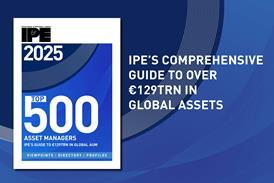Technically, the European high yield market started in 1997 with a handful of sub-investment-grade issues in European currencies. It was not until mid-1999, however, that the market truly started to gather momentum in terms of issuance and investors with funds and skills to match.
This also coincided with massive demand for capital by new economy companies – and investors’ willingness to provide it. The high yield market was therefore initially dominated by telecom, media and technology (TMT) issuers. After the ‘irrational exuberance’ of 1999, both the expectations of future growth and the actual growth of these companies failed to meet initial optimism.
The experience of the TMT companies provides a salutary reminder about the nature of credit risk. In an equity investment, the investor takes an ownership stake in the company. Importantly, the company has the subjective flexibility to determine if, when and how much cash will flow out of the company by way of dividends.
This contrasts starkly with the features of participation in a company through a bond. A bond is a legal contract between the company and the lender. As such, the amount and timing of cash flow back to the bond holder is not at the discretion of the company, but is determined in advance. It is this pre-determined obligation for cash to leave the company that is the root of the risk.
This is the source of risk contained in all bonds and the credit risk itself is the margin for error that the company has to meet these obligations. With high yield bonds, the borrower has a very small margin of error in execution of the business before it fails to meet its contractual obligations. The greater the companies’ earnings, the greater margin for error they have to pay interest and principal commitments and consequently the greater the creditworthiness of the company.
Over the past two years many TMT companies have failed to meet initial plans and hence the risk associated with fulfilling their obligations to bond holders has increased.
Every high yield borrower presents a plan of an improving credit. The factors affecting these plans vary from being completely within the control of the company (capital expenditures, property divestitures and personnel rationalisation) to being factors that it can only influence (uptake of new products) to factors that are completely outside of its control (economic activity).
The TMT market has been dominated by companies for which the most important factor was top line growth, which is not within their control. As growth and profitability have suffered with these companies clearly the bonds have also performed poorly, either defaulting or trading at substantial discounts to par.
The lesson here is that some companies should not be debt financed. The capital structure of a business has to be closely analysed to determine if it can sustain the margin for error that is intrinsic to the business plan. When approaching the investment decision, high yield investors must first determine whether it is a business that should be equity financed or debt financed. Not all business plans can sustain material amounts of debt.
The challenge in high yield is for investors to put the appropriate price on the risk that they are taking. There does, however, come a point where, from a bondholders’ perspective, there is no appropriate price. If the company does not have the ability to sustain its obligations to pay money out of the company in the first place, then increasing the coupon – that is, the compensation for the risk that we are taking – merely compounds the problem.
Another more fundamental lesson is the need to question the business viability itself. The valuation of an equity should, among other things, reflect the present value of dividends that the equity holder has a right to receive in the future. If the valuation of an equity is determined by essentially trying to predict the unpredictable, as is the case with many high growth companies, then it becomes impossible to ascribe value reliably. If there is a doubtful investment case for owning the company then clearly one should definitely not be lending it money.
A final lesson of the TMT experience is to concentrate on a company’s liquidity. As business plans under-shoot and profitability decreases, ‘fully-funded’ business plans that were predicated on internally generated cash for their funding suddenly find themselves running out of cash. The companies that are weathering the difficult environment at the moment are those that have secured funding adequate for several years to come.
The key challenge for investors in European high yield is to commit funds in line with the growth of the market. As more funds are dogmatically pushed into the market and supply does not match demand, the market in Europe runs the risk of becoming expensive to the extent that investors are not adequately compensated for the risks they are taking.
This is in contrast with the current situation in the US where, because of the depth of the market, only strong companies are able to come to market in the current economic environment. The average credit statistics of new issuers in the US high yield market at the moment are the strongest since 1991.
Adequate supply is perhaps the biggest structural issue facing the European high yield market today. Much publicity is being given to the so-called ‘fallen angels’, formerly investment grade bonds downgraded to sub-investment-grade status.
However, to be able to lend money to a company, we have first to be able to analyse it. Typically with a downgrade we have little accounting and information clarity, low visibility to future earnings and much event risk, such as bank loan renegotiations. It can therefore be a gamble to invest in these situations.
Additionally, the ratings agencies have recently said that they will react more quickly to changing credit situations. This will introduce more volatility into investment grade and high yield alike and produce more opportunity for high yield investors.
So where will the supply come from? So far, the market has been dominated by leveraged buyout, management buyout and mergers and acquisitions transactions where the equity component of the deal is being leveraged. Typically the bond financing would come through six months to a year after the initial transaction closes. With the slowdown in economic activity over the past couple of years, this source of supply has slowed down, but should pick up, lagging the economic cycle.
In the US, a massive source of high yield issuance has been from mid-cap public equity companies who use high yield financing as a regular tool in funding. This is an area that has been slow to take off in Europe, but is expected to become more prominent in the future. A particular driver of this source of growth is the move away from uneconomic ‘relationship’ bank lending. As banks demand a more appropriate premium for the credit risk that they are taking, the borrower has to weigh up the bank markets versus the bond markets.
What of the future prospects for the high yield market in Europe? For some time, it was argued that the European high yield market was cheap, but it continued to get cheaper. This proposition was flawed for two reasons. First, with a market as young as that in Europe, it is impossible to reliable determine where the long run fair value is and so infer a rich or cheap valuation. Second, while valuations were implying strong future growth and expectations for economic activity were still overly-optimistic, news of lower-than-expected performance came as a negative shock and continued to depress asset valuations.
After the marked decline in asset valuations and the almost universal pessimism about the future prospects for economic growth, the market finally arrived at a cheap valuation and there was limited scope for negative news to adversely affect those valuations. Combine this with the prospect of economic recovery coming from an unprecedented fiscal stimulus package in the US and the lagging effect of easing of monetary policy and a number of positive factors for the asset class had all coincided.
The story of the high yield companies themselves over the past year has been one of destocking. High yield companies are typified by being at the very bottom of the demand chain. As inventories are now at very low levels, marginal demand at the top of the value-added chain should flow very quickly through to demand at the level of the high yield companies.
This year should therefore be one of stable conditions for the market. Specific companies will have problems, but the market as a whole should be well underpinned by both fundamental factors and also the amount of money coming into the market. Stability is a good feature for the high yield market as with no capital depreciation we get to earn a double-digit yield.
A solution to obtaining exposure to the high yield asset class that is gaining momentum with European investors is a ‘global’ approach. There are great opportunities in the European high yield market, but there are also structural shortcomings. By combining both European and US opportunities, the arbitrage opportunities in Europe are augmented by the structural benefits of the deep and diverse US market.
John Lupton is head of global high yield asset management at WestAM in London








No comments yet